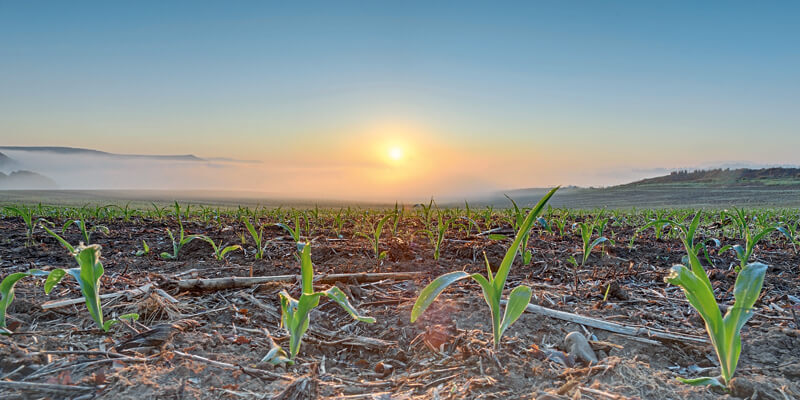With predictions that the world must feed nine billion people by 2050, and when the demand for food will be 60% greater than today, Mark Jarman looks at the role for Earth Observation in addressing the issue of food security

The issue of food security is a global endeavour that requires international collaboration and coordination. The global food system faces unprecedented challenges, from population growth to climate change, and from demands on productivity to environmental protection and consumer pressure. They continue to put further strain on agricultural value chains and influence the market forces which shape food production. In 2019, The Global Food Security programme identified the major challenges for the food industry that would benefit from transformative innovation as:
- Traceability, transparency, and disclosure
- Food safety, fraud, and security
- Efficiency, productivity, and sustainability
- Improving diets and health
- Reducing waste
Essential to addressing these challenges will be how supply chain stakeholders embrace disruptive and pervasive technologies, unlock transformative innovation (e.g., Robotics, AI) and define new ‘business as usual’ methodologies for the way we produce food. However, there are challenges and trade-offs in adoption, which need to be managed, understood, and researched to avoid unintended consequences and system volatility.
Balancing supply and demand
Covid-19 has created the necessity for organisations across food supply chains to have access to timely information about production or supply chain status, thereby to minimise production risks and ensure a balance between supply and demand. Users are increasingly turning to satellite-enabled products and services, thanks to the availability of cost-effective global monitoring, connectivity, and locational solutions within the market.
One of the best-known uses of satellite technology in agricultural production and environmental protection is that of Earth Observation (EO). Such satellites and their optical, radar and multispectral sensors can image change over ever-shorter timescales on land, at sea and in the air. Despite this, many users remain underwhelmed by EO data, often regarding the data produced as ‘picture agriculture’ and referring to the technology as a solution looking for a question. Against this preconception, and due to cost, access or simply lack of available data, it can often fail to deliver value to users.
New constellations such as. Planet1, institutional investments such as Copernicus,2 and advances in computational systems and data access such as AWS3 are beginning to create a paradigm shift in thinking about the use of EO data. Thanks to that change, it is now being viewed as a tool to assist decision-making across food production systems and, ultimately, to address sector-wide challenges.
A single source of truth
As such, we are now seeing EO being viewed as a ‘single source of truth’ whereby users across supply chains can easily access the same consistent and global datasets. Whether it be for precision farming, for variable rate fertiliser applications, or for monitoring illegal deforestation, EO data, if used correctly and alongside other information sources, can create value for all.
Delivering at scale
We are seeing EO enabled services delivering at scale at price points users are willing to pay for a whole variety of purposes:
- To help farmers minimise in-season production risks,
- To support advisory services with targeted information
- To aid insurance companies in assessing loans and allocating payments
- To support food processors in balancing supply and demand,
- To help reduce adverse environmental and societal impacts on global supply chains.
We must, though, continue to work to ensure that EO technologies and the human skills needed to analyse and interpret EO data are developed if they are to meet the continuous need for increase productivity, improved quality and reduced cost across all sectors of food production.
We must also focus efforts on data ethics and data governance to ensure data can be shared securely and safely, yet also create commercial opportunities by making it easier for other organisations in the agricultural industry find the information they need.
Data on demand
Robotics, Artificial Intelligence, and ubiquitous connectivity have all been highlighted as technologies to transform food production, but all require an ability to easily access and share data. Satellite technologies can play a key role in ensuring this data is accurate, accessible, and available as and when required by different stakeholders across the value chain.
To learn more about the services that satellites can offer in agriculture, please read Satellites in Agriculture published by the Satellite Applications Catapult in collaboration with the Agriculture and Horticulture Development Board (AHDB).4
Mark Jarman is the Head of Agriculture at the Satellite Applications Catapult, based at Harwell, Didcot, Oxfordshire, and is responsible for developing and delivering innovative and sustainable solutions to challenges across the agricultural sector (www.sa.catapult.org.uk)
References


